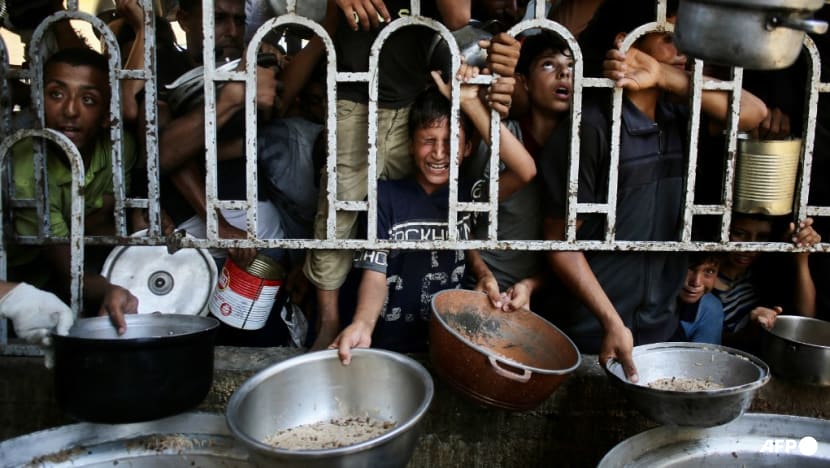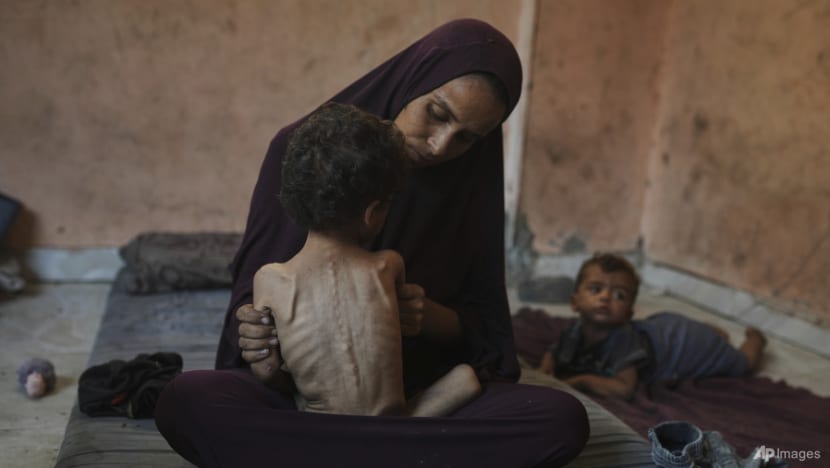Commentary: Air-dropping food into Gaza is a ‘smokescreen’ as starvation worsens
States must exercise their full diplomatic leverage to pressure Israel to let aid in at the scale required to avert famine, says this humanitarian practitioner and researcher.

CANBERRA: Israel partially lifted its aid blockade of Gaza this week in response to intensifying over the man-made famine in the devastated coastal strip.
The United Arab Emirates and Jordan airdropped on Sunday (Jul 27). Israel has further announced daily pauses in its military strikes on Gaza and the opening of humanitarian corridors to facilitate United Nations aid deliveries.
Israel reports it has permitted 70 trucks per day into the strip since May 19. This is well below the 500 to 600 trucks required per day, according to the UN.
The UN emergency relief chief, Tom Fletcher, has characterised the next few days as “make or break” for humanitarian agencies trying to reach more than 2 million Gazans facing “famine-like conditions”.
A third of Gazans have gone without food for several days and 90,000 women and children now require urgent care for acute malnutrition. Local health authorities have reported 147 deaths fromso far, 80 per cent of whom are children.
Israeli Prime Minister Benjamin Netanyahu has claimed – without any evidence – “there is no starvation in Gaza”. This claim has been rejected by world leaders, including Netanyahu ally United
Famine expert Alex de Waal has called the famine in Gaza without precedent: “There’s no case of such minutely engineered, closely monitored, precisely designed mass starvation of a population as is happening in Gaza today.”
While the UN has welcomed the partial lifting of the blockade, the current aid being allowed into Gaza will not be enough to avert a wider catastrophe, due to the severity and depth of hunger in Gaza and the health needs of the people.
According to the UN World Food Programme, which has enough food stockpiled to feed all of Gaza for three months, only one thing will work: “An agreed ceasefire is the only way to reach everyone.”
AIRDROPS A “DISTRACTION AND A SMOKESCREEN”
Air-dropping food supplies is considered a last resort due to the undignified and unsafe manner in which the aid is delivered.
The UN has already reported civilians being injured when packages have fallen on tents.
The Global Protection Cluster, a network of non-governmental organisations and UN agencies, shared a story from a mother in Al Karama, east of Gaza City, whose home was hit by an airdropped pallet, causing the roof to collapse.
“Immediately following the impact, a group of people armed with knives rushed towards the house, while the mother locked herself and her children in the remaining room to protect her family. They did not receive any assistance and are fearful for their safety.”
Air-dropped pallets of food are also inefficient compared with what can be delivered by road.
One truck can carry up to 20 tonnes of supplies. Trucks can also reach Gaza quickly if they are allowed to cross at the scale required. Aid agencies have repeatedly said they have the necessary aid and personnel sitting just one hour away at the border.
Given how ineffective the air drops have been – and will continue to be – the head of the UN Relief Works Agency (UNRWA) for Palestine has called them a “distraction” and a “smokescreen”.

